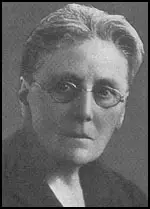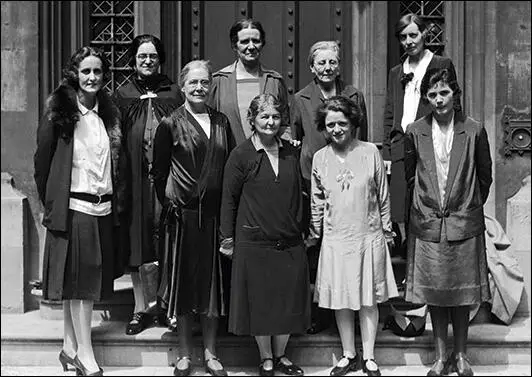Ethel Bentham

Ethel Bentham, the daughter of William Bentham, an inspector and later general manager of the Standard Life Assurance Company, and his wife, Mary Ann Hammond, was born in London on 5th January 1861. She grew up in Dublin and visited the slums of the city on charitable missions with her mother. It was these experiences that inspired her to become a doctor, as a means of helping the poor.
Bentham began her training at the London School of Medicine for Women at the age of almost thirty, and gained her certificate in medicine in 1893. The following year she studied in Paris and in Brussels, where she achieved the degree of MD in 1895. After a brief spell working in London hospitals she went into general practice in Newcastle upon Tyne.
In 1909 Bentham moved to London and shared a house in Holland Park with Marion Phillips. She joined the Fabian Society, the Labour Party, National Union of Women's Suffrage Societies and the Women's Labour League and became a Labour councillor in the London borough of Kensington. In 1911 she helped establish a pioneering baby clinic in North Kensington. The objective was to provide preventive medicine for mothers and babies.
In 1909 Bentham, Maud Pember Reeves and the Fabian Women's Group began a four year study of the daily lives of working-class families in Lambeth. Maud's biographer, Sally Alexander, has argued: "The Lambeth mothers' project, initiated by Maud, was prompted by the recognition that more infants died in the London slums than in Kensington or Hampstead... Forty-two families were selected from a lying-in hospital in Lambeth, London, to have weekly visits, medical examinations from Dr Ethel Bentham every two weeks, and 5s. to be paid to the mother for extra nourishment for three months before the birth of the baby and for one year afterwards. The money came from private donations, and the mothers wrote down their weekly expenditure. Eight families withdrew because the husbands objected to this weekly scrutiny. Eight other mothers who could not read or write dictated their sums to their husbands or children."
Bentham's biographer, C. V. J. Griffiths, has pointed out: "A commitment to the suffrage movement was increasingly overtaken by her involvement in labour politics, and from March 1910 she sat on the executive of the Women's Labour League, chairing the committee regularly from 1912 onwards; she also held office in the Fabian Society. When the Women's Labour League was absorbed into the Labour Party in 1918, Bentham came top of the women's ballot in elections to the national executive committee."
In the 1929 General Election Bentham was elected to represent the constituency of East Islington, at the age of sixty-eight. The Conservative Party won 8,664,000 votes, the Labour Party 8,360,000 and the Liberal Party 5,300,000. However, the bias of the system worked in Labour's favour, and in the House of Commons the party won 287 seats, the Conservatives 261 and the Liberals 59. Ramsay MacDonald became Prime Minister, but as before, he still had to rely on the support of the Liberals to hold onto power.

Cynthia Mosley, Marion Phillips, Susan Lawrence, Edith Picton-Turberville,
Margaret Bondfield, Ethel Bentham, Ellen Wilkinson, Mary Hamilton and Jennie Lee.
The election of the Labour Government coincided with an economic depression and MacDonald was faced with the problem of growing unemployment. In January 1929, 1,433,000 people were out of work, a year later it reached 1,533,000. By March 1930, the figure was 1,731,000. In June it reached 1,946,000 and by the end of the year it reached a staggering 2,725,000. That month MacDonald invited a group of economists, including John Maynard Keynes, J. A. Hobson, George Douglas Cole and Walter Layton, to discuss this problem. However, he rejected all those ideas that involved an increase in public spending.
Bentham spoke in the House of Commons on a few occasions only, usually on matters relating to her experiences as a doctor and a magistrate, and she introduced a bill on married women's nationality in November 1930. However, she was suffering from poor health and she died at her home at 110 Beaufort Street, Chelsea, on 19th January 1931. She was therefore the first woman to die while a member of Parliament. She was cremated three days later at Golders Green.
Primary Sources
(1) C. V. J. Griffiths, Ethel Bentham (2012)
A commitment to the suffrage movement was increasingly overtaken by her involvement in labour politics, and from March 1910 she sat on the executive of the Women's Labour League, chairing the committee regularly from 1912 onwards; she also held office in the Fabian Society. When the Women's Labour League was absorbed into the Labour Party in 1918, Bentham came top of the women's ballot in elections to the national executive committee.

